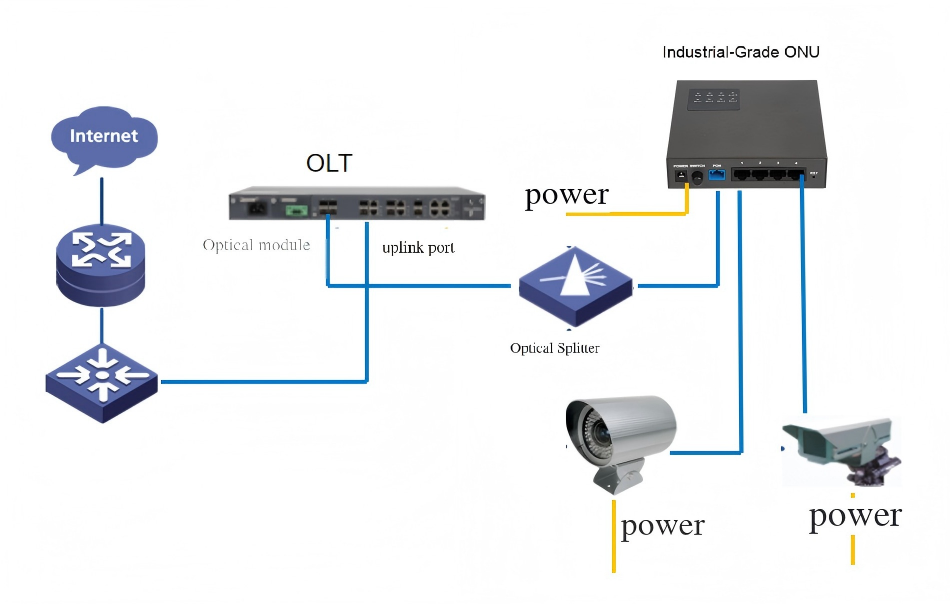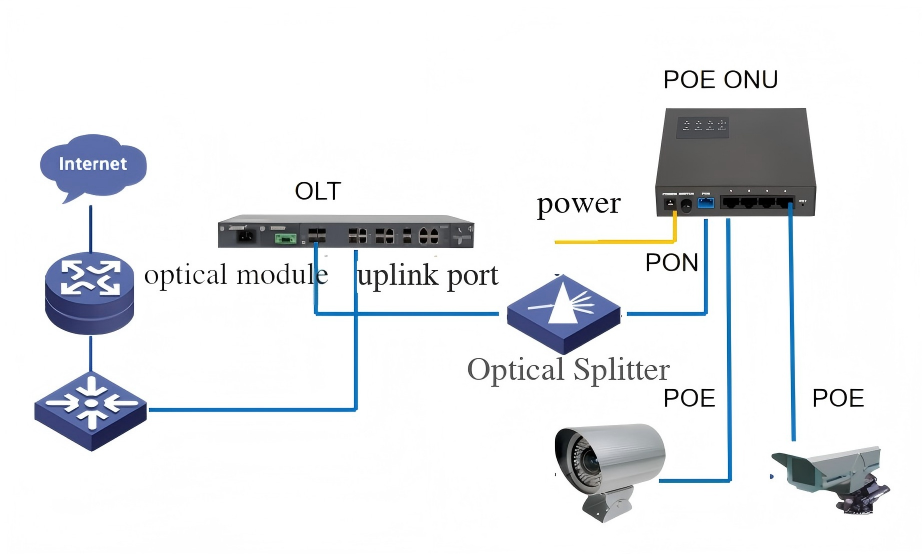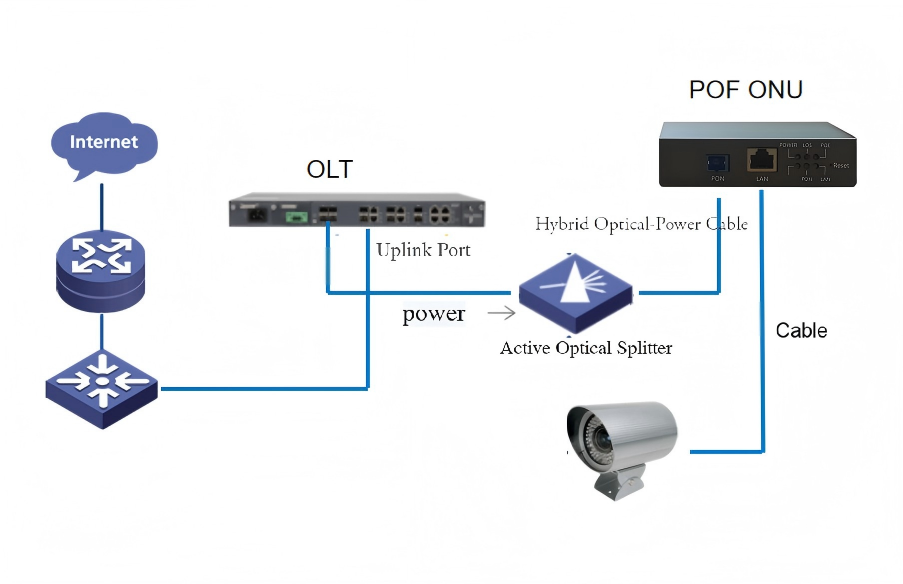

System Composition
Core Equipment: OLT (Optical Line Terminal)
Transmission Medium: Photoelectric Composite Cable (simultaneously transmitting optical signals and power)
Terminal Equipment:
POF optical modem (ONU, dedicated for photoelectric composite cables)
POE optical modem (ONU supporting Power over Ethernet)
Industrial-grade Standard Optical Network Unit (standard ONU)
Expansion Capability: Compatible with SD-WAN technology, enabling unified management and control of distributed business scenarios.
Core Advantages Compared to Traditional Switch Solutions
Dimension | All-Optical Solution | Traditional Switch Solution |
Networking Cost | Saves on independent power supplies and access-layer switches, reducing costs by 30% | Requires deployment of switches + independent power supply systems |
Transmission performance | 20km long-distance transmission over a single fiber with symmetric gigabit bandwidth | Copper cables ≤100m, with limited bandwidth expansion |
Scalability | Flexible addition/removal of nodes via splitters without modifying the backbone | Requires stacking switches/rewiring for expansion |
Maintenance Complexity | Passive ODN network reduces failure rates by 60% | High operational and maintenance costs due to multiple active devices |
Schematic Diagrams of Three Networking Scenarios
1. Basic Scenario (Standard Monitoring Points)

Features: Industrial-grade ONUs adapt to high and low-temperature environments.
2. POE power supply scenarios (Small and medium-sized dense points)

Features: The single ONU supports 4-channel PoE output, eliminating the need for power wiring
3.POF Scenarios

Features:
Suitable for scenarios where power access is inconvenient.
Single cable simultaneously resolves power supply and data transmission.
Core Value of the Solution
"Three Reductions and One Increase":
Cost Reduction: Saves on switches, power cords, and operational and maintenance manpower.
Efficiency Improvement: Business activation speed increased by 50%, with bandwidth adjustable on demand in seconds.
Enhanced Scalability: SD-WAN overlay enables unified scheduling of cross-domain monitoring and supports smooth expansion for future AI analysis services.



